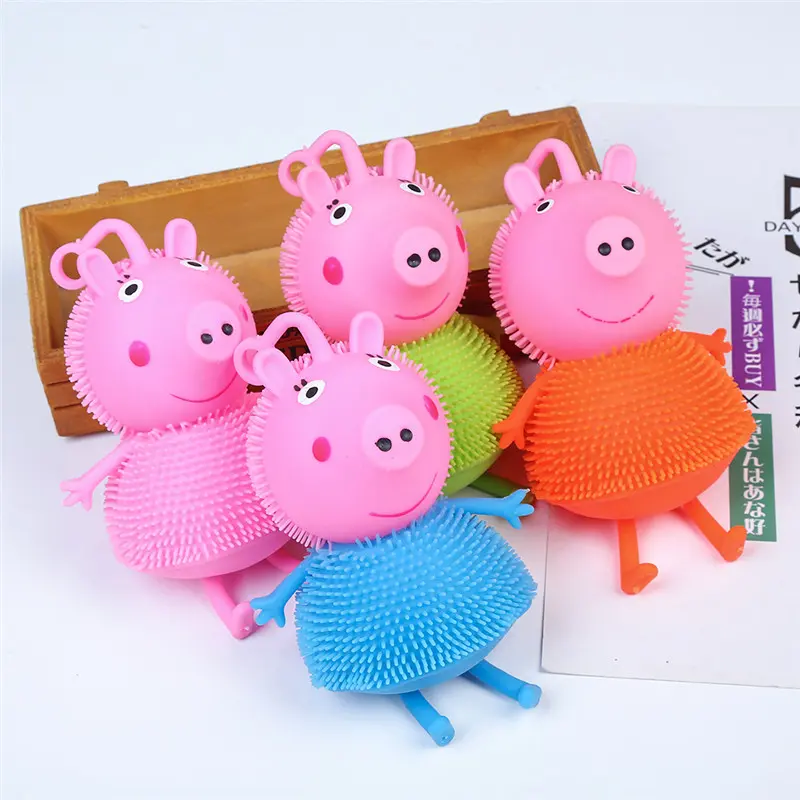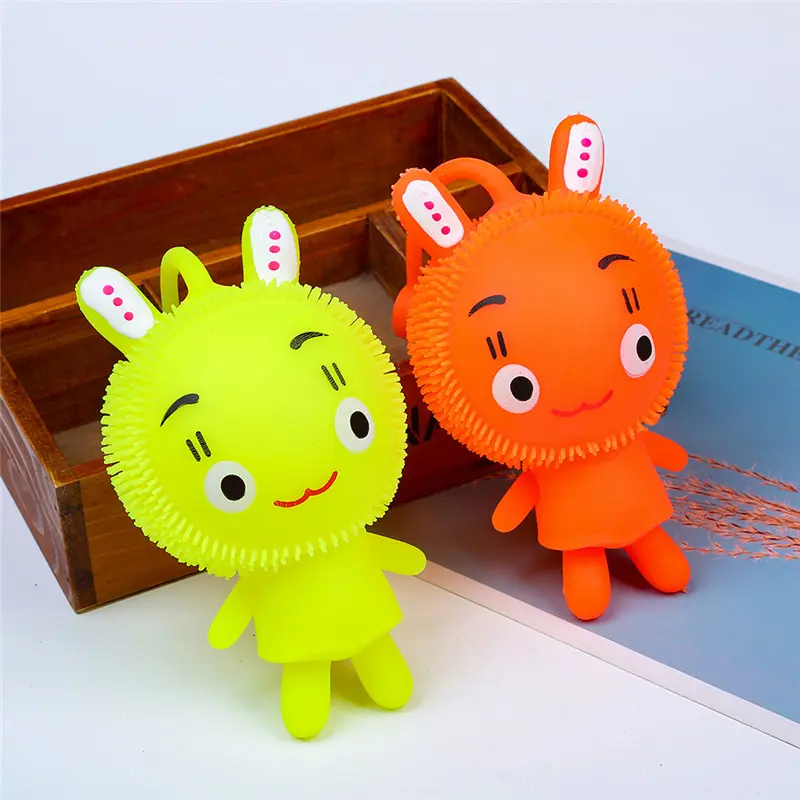Essential Pre-shipment Tasks for Stress-Relief Children’s Toys
In the cross-border e-commerce sector, stress-relief children’s toys, thanks to their dual value of soothing emotions and improving hand coordination, have become a popular choice among parents and buyers. However, as products intended for children, every pre-shipment process is crucial to children’s safety and user experience, and even impacts the brand’s international reputation. Today, from an export perspective, we’ll analyze the five core tasks that must be completed before stress-relief children’s toys ship, helping you understand the “craftsmanship” behind high-quality products.
I. Safety Testing: The Lifeline of Children’s Toys and the First Threshold for Export
The safety of children’s toys is always the top priority, especially for export products, which must meet the stringent standards of different countries and regions (such as the EU CE certification, the US CPSIA, and China GB 6675). Pre-shipment safety testing must cover the three dimensions of “material, structure, and chemistry” to ensure a thorough inspection:
1. Material Safety: Eliminating Hidden Dangers at the Source
Basic Material Screening: Common materials used in compression toys, such as silicone, EVA, and PU, must first pass “hazardous substance release testing.” For example, silicone must be tested for excessive phthalates (plasticizers), while EVA must be checked for formaldehyde and heavy metals (lead and cadmium) to ensure compliance with target market limits. For example, the EU REACH regulation explicitly stipulates that lead content in toys must not exceed 100mg/kg and prohibits the use of over 2,000 high-risk chemicals. Specialized Testing for Special Materials: Chewable compression toys (such as silicone squishy toys) require additional oral contact safety testing, simulating a child’s chewing environment to determine whether the material is susceptible to breakage and releases toxic substances. Elastic compression balls and tension toys must undergo tensile strength testing to prevent breakage due to insufficient material toughness, which could lead to the risk of ingestion of small parts.
2. Physical Safety: Avoiding Structural Design Hazards
Small Parts and Edge Inspection: Based on age groups (e.g., toys for children under 3 should avoid small parts), use a “Small Parts Tester” to verify the presence of removable small parts (such as decorative stickers and lanyards on compression toys). Also, use an “Edge Tester” to check for sharp corners. All exposed edges must be polished or hemmed to prevent scratches on children’s skin. Durability and damage resistance testing: Compression toys must withstand repeated squeezing, stretching, and dropping. They must undergo a “cycled use test” before leaving the factory. For example, compression squeeze toys must be pressed 5,000 times continuously to observe for cracking or deformation; compression building blocks must be dropped 10 times from a height of 1.2 meters to check for loose joints. Only through these tests can we ensure that products pose no safety hazards during long-term use by children.
3. Chemical Safety: Invisible “Invisible Protection”
Paint and Printing Testing: If the surface of a compression toy has patterns or text (such as cartoon compression boards), the printing ink must be tested for harmful substances such as heavy metals and formaldehyde. A friction test is also required to verify whether the ink is easily rubbed off (wiping with a damp cloth 10 times without fading is considered acceptable) to prevent children from ingesting toxic substances through licking. Odor and Volatility Testing: Some compression toys (such as foam compression bricks) may produce odors due to the material and craftsmanship. Before shipping, they must be placed in a sealed environment for 24 hours and tested for volatile organic compound (VOC) content using specialized equipment. A sensory testing team also verifies the absence of irritating odors to ensure respiratory safety for children.
II. Quality Control: Detailed Refinement from “Qualified” to “High-Quality”
Safety is the bottom line, while quality determines a product’s market competitiveness. Factory quality control for children’s decompression toys must focus on three key areas: “functional stability,” “user experience,” and “consistency,” ensuring that every product meets design expectations:
1. Functional Stability: Ensuring a long-lasting decompression effect
Core Functional Testing: Different types of decompression toys require specific functional verification. For example, decompression bubble toys require testing for “bubble rebound speed” (bubble rebounds within 3 seconds after pressing to pass) and “sealing” (no leakage after repeated pressing 100 times); decompression noodle ropes require testing for “stretch recovery” (stretched to 3 times their original length, returning to their original shape within 30 seconds without breaking after release).
Environmental Adaptability Testing: Given that export products may undergo long-distance transportation (high and low temperatures, humidity, and other environments), “temperature and humidity cycling testing” is required. The toys are placed in -20°C (low temperature), 60°C (high temperature), and 90% humidity for 48 hours each to observe for issues such as material hardening, cracking, and functional failure, ensuring that the products are suitable for different regional climates.
2. Detailed Experience: Creating a “Child-Friendly” Experience
Tactile and Size Optimization: Toy sizes should be adjusted to the hand sizes of children of different age groups (for example, toys for children aged 3-6 should be at least 5cm in diameter to prevent accidental swallowing). Tactile testing should also be conducted to ensure that the surface is free of burrs and a non-sticky feel. For example, silicone compression toys should be soft and non-sticky, preventing slippage even with sweat.
Sound and Color Control: Compression toys with sound functions (such as a squeezing sound-generating compression ball) should be tested to ensure the volume is between 60-70 decibels (to prevent hearing damage). Colors must meet “Child Vision Protection Standards,” avoiding the use of highly saturated, easily faded pigments. Color fastness testing should be conducted to ensure that the color remains resistant to fading after washing or exposure to sunlight, preventing staining by children.
3. Compliance Certification: The “Passport” for Exports, Indispensable Documentary Support
Compliance certification is not only a necessary requirement for customs clearance but also a key element in demonstrating product safety to buyers. Before shipment, products must complete three key areas: target market certification, company qualifications, and product documentation. Ensure that each document is authentic and valid:
1. Target Market-Specific Certification
For the EU market: CE certification (EN 71 series standards, covering physical, chemical, and mechanical safety) is required. If the product is intended for children aged 0-3, additional CE-0883 certification is required. An EU Responsible Person (EC Representative) must also be registered to ensure traceability in the EU market.
For the US market: CPSIA certification is required, including lead and phthalate testing, and a Children’s Product Certificate (CPC) must be submitted. If the product contains electronic components (such as light-up toys), FCC certification must also be met to prevent electromagnetic interference. For other markets, such as the UKCA certification in the UK, AS/NZS ISO 8124 in Australia, and ST 2016 in Japan, the certification process should be initiated 3-6 months in advance, depending on the target market, to ensure that the certification documents are valid upon shipment. This can prevent shipments from being held up at customs due to certification delays.
2. Company and Product Document Preparation
Factory Inspection Report (COA): Each batch of products must include a detailed factory inspection report containing information such as material testing data, functional test results, and a sampling ratio (usually no less than 3%). The report must also be stamped with the company’s quality inspection stamp to ensure data traceability.
Product Instructions and Labeling Specifications: Instructions must be labeled in the target market’s language (e.g., English, German, Japanese, etc.) with “Age Applicable,” “Contraindications,” and “Safety Warnings” (e.g., “Do Not Swallow Small Parts”). Labels must include information such as the product name, material, manufacturer, certification mark, and batch number. Labels must be securely affixed and pass the “label adhesion test” (tape adheres and then peels without peeling off).
IV. Packaging Design: Both Product Protection and Cross-Border Shipping Requirements
Compression toys are often made of fragile or easily deformable materials. Therefore, pre-shipment packaging design must balance protection, compliance, and environmental friendliness to prevent damage during transportation while complying with packaging regulations in the target market:
1. Protective Packaging: Reduce Transportation Losses
Inner Packaging Cushioning: Use cushioning materials such as bubble wrap, pearl cotton, and corrugated cardboard to secure the toy within the packaging and prevent vibration and impact. For example, compression toys should be packaged in individual sealed bags and then enclosed in custom foam grooves to prevent deformation. Compression toys with parts (such as compression building sets) should be packaged separately, with each part enclosed in a separate bag to prevent loss. Outer Packaging Compression Test: Outer packaging must be made of five-layer corrugated cardboard (bursting strength no less than 1800kPa) and pass both a “stacking test” (simulating a warehouse stack of three layers, remaining uncollapsed for 72 hours) and a “drop test” (dropping from a height of 1.5 meters on six sides, with no damage to the packaging or product), ensuring it can withstand the handling and stacking pressures encountered during international logistics.
2. Compliant and Environmentally Friendly Packaging
Compliant packaging materials: Avoid using packaging materials containing freons and heavy metals, and comply with environmental standards such as EU RoHS and US TPCH. If the target market is the EU, packaging must also be labeled with a “recycling symbol” (e.g., “Paper Recycling” for paper products) and provide a “Packaging Material Composition Statement.”
Labels and Logistics Information: The outer packaging must be clearly labeled with logistics symbols such as “Fragile,” “Moisture-Proof,” and “Upward.” It must also be affixed with the “Customs Code (HS Code)” and “Origin Label” (e.g., “Made in China”). If the product is packaged in wood, a “Fumigation Certificate (IPPC)” must be obtained in advance to avoid rejection by customs in the destination country due to non-compliant packaging.
V. Full-Process Quality Control: Closed-Loop Management from Pre-Production to Factory Delivery
High-quality stress-relieving children’s toys cannot be achieved solely through a “final factory inspection.” Instead, a comprehensive quality control system encompassing “pre-production sample confirmation – mass production inspection – finished product spot checks – warehouse review” is required to ensure that every step is standardized, documented, and traceable:
1. Pre-Production Sample Confirmation: Locking in Standards to Avoid Batch Issues
Before mass production, 3-5 sets of “pre-production samples” must be produced and jointly verified by the quality inspection team, design team, and procurement (if applicable) to ensure consistency with the design draft in terms of material, size, function, and color. Small batch tests (e.g., safety testing of 100 samples) are also conducted. After confirmation that all products are correct and a “pre-production sample confirmation letter” is signed, mass production can begin, avoiding batch rework due to design deviations.
2. Mass Production Inspections: Real-Time Monitoring and Timely Error Correction
During mass production, quality inspectors must conduct inspections every two hours, randomly sampling 10-20 products to check material consistency, workmanship details (such as secure joints and legible printing), and functional stability. If any issues are found (e.g., burrs on the edges of a batch of products), production must be immediately suspended, the cause analyzed, and corrected. Mass production can only be resumed after retesting to ensure compliance, preventing unqualified products from being passed to the next process.
3. Finished Product Random Inspection and Shipment Review
Finished Product Random Inspection: After each batch of products is completed, samples are collected according to GB/T 2828.1 (Special Inspection Level S-3, AQL 1.0). If the pass rate is less than 99%, the sampling rate will be increased to 10%. If the pass rate is still below 99%, the entire batch must be reworked or destroyed. Defective products must not be shipped.
Shipping Verification: Before shipping, the consistency of “product information – certification documents – order information” must be verified. For example, the batch number must match the factory inspection report, the certification documents cover the target market, and the quantity in the order matches the actual shipment quantity. The shipping time and logistics order number are also recorded to ensure product traceability and facilitate subsequent after-sales management.
Post time: Oct-13-2025

